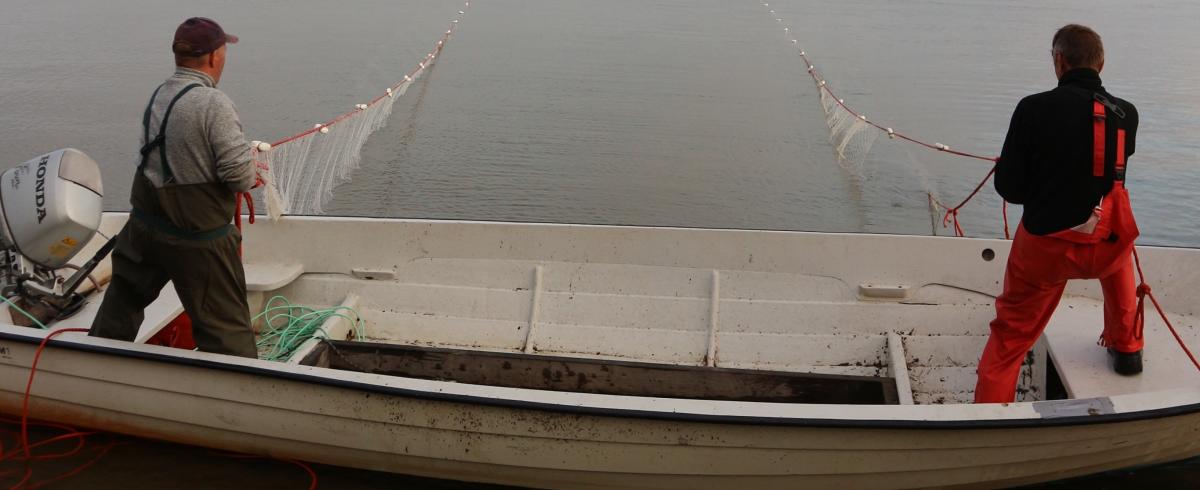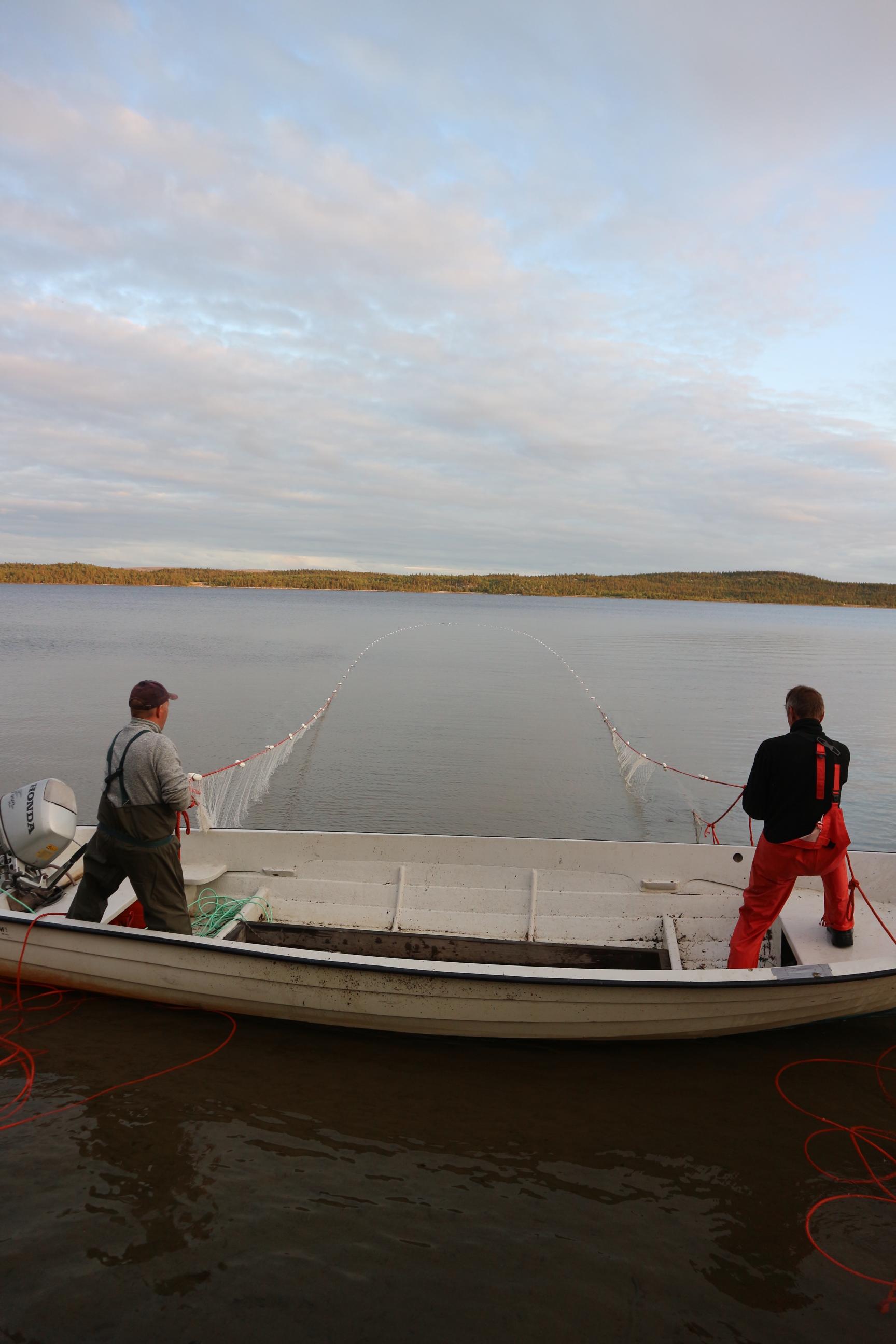
Näätämö River Collaborative Management
August 2021

Photo 1. Skolt Sami fisherman Juha Feodoroff and a seasonal helping hand (on the right) seining for whitefish on lake Jänisjärvi
The Näätämö River is a cross-border river, flowing from Finland to Norway on the coast of the Barents Sea. Today, the watershed is home to Kven, Finnish, and Norweigan residents, as well as the Skolt Sámi. The Sámi are the only Indigenous peoples in the European Union. The Skolt Sámi are an eastern Sámi group and inhabit the borderland between present-day Finland, Russia, and Norway. The Sami are the descendants of nomadic reindeer herders, and have been harvesting salmon on the Näätämö River, at least in documented cases, from the 1500s.
In 2009, by applying self-reflection and future visioning based on Indigenous knowledge, the Sevettijärvi Skolt Sámi developed a community-based climate adaptation plan. Consensus emerged that the challenges faced by the reindeer (a crucial resource to the Skolt Sami), while significant, are manageable. Skolt Sámi identified their customary salmon fishery in the Näätämö river catchment area as a much greater concern and installed the Näätämö River Collaborative Management Plan.
The Näätämö River, a cross-border catchment area, is a healthy Atlantic Salmon river. It has always been a home stream of the various Skolt Sámi nations. Threats include severe climate fluctuations, which affect habitats and water levels, fish parasites, salmon farming along the coast of Norway, and the releases from the close-by mining activities. Solutions include restoration of spawning locations based on traditional knowledge, assessment of the role of freshwater mussels as key indicators, and other innovations.
The Näätämö River Collaborative Management Plan is the first of its kind in Finland. In the first five years of its existence, the focus has rested on a deep dialogue between Skolt Sámi Indigenous knowledge and the latest research. Collaborative, hands-on measures include harvests of predator fish along the deep pools of the Näätämö River to increase salmon productivity and daily monitoring of habitat, fish health, and traditional weather observations and forecasts.

Photo 2. Skolt Sami fisherman Juha Feodoroff and Snowchange fishermanLauri Hämäläinen checking a fyke trapnet on lake Inari for whitefish
Traditional land and water occupancy of the Skolt Sámi has informed scientists and management bodies of the ways different families still use the Näätämö watershed. The Skolts have preserved the Skolt Sámi Siida council (traditional village council) system, unbroken to contemporary times as an Indigenous decision-making body.
The relationship the Skolts have with their river contains a variety of engagements including different harvested fish species, oral histories of place names, seasonal family pathways, handicrafts, songs and language. On-going salmon harvests renew the relationships with the river and simultaneously the Skolt knowledge, tradition and language. Recently, the Skolt Sámi have taken steps to limit their own cultural catch to make sure the number of salmon reaching spawning grounds increases.
The Näätämö River Collaborative Management project has received unprecedented international attention over the course of its existence. It has been covered in numerous local, national and international media including National Geographic, Our World 2.0 and UNEP Live. A sister project has been initiated along the Ponoi river, Murmansk, Russia. The keynote presentation of the Arctic Observation Summit 2014 held in Helsinki, Finland focused on the Näätämö project. In September 2014 the Skolts hosted the Festival of Northern Fishing Traditions along Näätämö and in the village of Sevettijärvi and sent a large delegation to the Festival in 2018.
In January 2021, with new funds from Nordic Environment Finance Corporation (NEFCO), the Näätämö and Ponoi work is expanding. This has included plastic surveys on Näätämö, community-based monitoring and assessments on the success of the spawning sites, several new science papers, impact of invasive Pink Salmon and preparation for further rewilding work in the catchment area in 2021.
The project is coordinated by the Snowchange Cooperative (with a range of donors) and the Saa’mi Nue’tt Cultural Organisation. This story has been adapted for the SSF Hub Highlights from the report, River Collaborative Management Efforts by the Skolt Sámi.
Read the Ponoi and Näätämö River Collaborative Management Plan here.
Learn more about traditional knowledge and the Näätämö monitoring here.
To learn more about the project, visit SnowChange Cooperative and their page on Collaborative Management Along the Näätämö Watershed.
This article is part of the SSF Highlights series of articles published regularly to the SSF Hub. To read previous SSF Highlights, follow this link.
